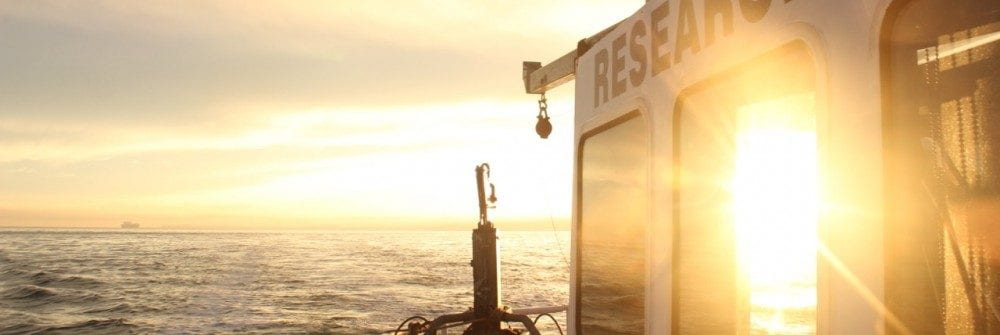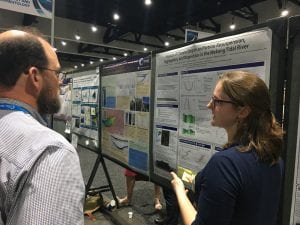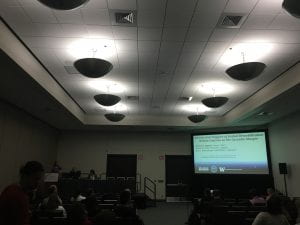It’s conference season again, and our lab is headed to Washington D.C. to meet and mingle with other scientists and students. Here is what we will be chatting about this time.
First up, our recent research in the Ayeyarwady Delta:
Andrea’s poster: Sedimentary Processes in the Tidal River to Estuarine Reach of the Ayeyarwady Delta (EP13C-2114)
Monday, 13:40 – 18:00
Walter E Washington Convention Center Hall A-C (Poster Hall)
As the Ayeyarwady River approaches the Andaman Sea, it splits into multiple delta distributary channels, which together discharge >108 t/y of sediment. This study aims to understand: sediment retention and geomorphic variability through the lower distributaries, deltaic growth along mangrove shorelines, and sediment export to the coastal ocean.
Aaron’s Poster: Temporal variability in suspended-sediment dynamics within three distributaries of the Ayeyarwady Delta, Myanmar (EP13C-2113)
Monday, 13:40 – 18:00
Walter E Washington Convention Center Hall A-C (Poster Hall)
The Ayeyarwady River is one of the largest sources of sediment to the global ocean. However, little is known about the timing, character, or routing of that sediment within the large Ayeyarwady Delta, which is building into the northern Andaman Sea. This study examines how the suspended loads of these distributaries vary spatially (along and between distributaries) and temporally (decennially, seasonally, fortnightly) using in-situ and remote-sensing approaches.
Later that afternoon, our recent research in Brazilian tidal channels:

Robin’s Talk: The Impacts of Channel Connectivity on Tidally-Driven Sediment Transport and Accumulation in a Mangrove Forest (OS14B-03)
Monday, 16:30 – 16:45
Walter E Washington Convention Center – 103AB
Mangrove forests provide many valuable ecosystem services, including wave- and tidal-energy dissipation, sediment accumulation, and substrate stabilization. But, their global extent is rapidly shrinking. Sediment cores and in-situ observations of water and sediment flux were obtained in two tidal channels near the Amazon River mouth to characterize how connectivity impacts tidally-driven sediment transport and accumulation in coastal mangrove forests.
Wrapping up our presentations, our research on the Elwha nearshore:

Hannah’s Talk: Nearshore benthic light attenuation due to sediment transport following dam removal on the Elwha River, WA: In-situ observations and statistical modeling (OS21B-08)
Tuesday, 09:45 – 10:00
Walter E Washington Convention Center – 103AB
The 2011–2014 removal of two dams from the Elwha River, WA provided an opportunity to study the sensitivity of a coastal ecosystem to a large-scale sediment input event. During the dam removal, >10 Mt of sediment was exported to the marine environment. Macroalgae, the primary habitat-forming species in the nearshore, disappeared from the region. Models were created to hindcast to light availability during the dam removal. Benthic light availability was found to be below the threshold for macroalgae growth, supporting the hypothesis that reduced light availability caused the mortality event.
















